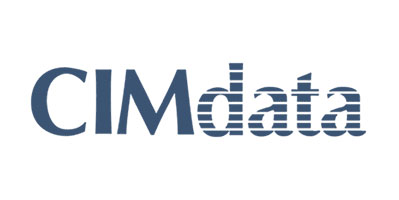Strengthening Operational Resilience:
How a leading UK high street bank is learning from the manufacturing industry to prevent operational disruptions to critical services and better protect customers
by Stan Przybylinski, Vice President, CIMdata
note: this post originally appeared on the CIMdata blog
It was our pleasure to speak with the Strategic Delivery Lead, Service Delivery and Operational Resilience Centre of Excellence at one of the UK’s leading high street banks (henceforth known as BANK A).
Operational resilience refers to “the ability to prevent, respond to, recover and learn from operational disruptions to services, to survive and prosper, and not cause harm to customers and the wider market” (Bank of England definition). As a result of a 2018 discussion paper and a follow up 2019 consultation paper both produced jointly by the United Kingdom’s banking regulators Bank of England, the Financial Conduct Authority (FCA), and Prudential Regulation Authority (PRA), an industry-wide consortium is collaborating to address the ‘step change’ requested by the Bank of England. The consortium’s objective is to develop a regime of operational resilience disciplines to meet the regulatory bodies’ key concerns, namely to strengthen protection for customers and the economy and ensure institutions can withstand external threats and disruptions. This also addresses the major points raised in the UK’s Parliamentary Treasury Select Committee report “IT Failures in the Financial Services Sector.”

They recognized that customers are increasingly expected to use digital services yet these services are being significantly disrupted by IT failure. This results in customers being unable to make payments or withdraw cash and small businesses are left unable to conduct basic services to run their businesses. According to the Committee, the current levels and frequency of harm to customers is unacceptable. As a result, firms need to identify, stress test and set their own maximum impact tolerance levels of disruption and duration for important business services.
In researching and to address the ‘step change’ required, BANK A took inspiration from the manufacturing industry which uses a 3D modelling approach. Dassault Systèmes was invited to explore and develop a solution, bringing their digitalization, 3D modelling, and engineering heritage gained in manufacturing and regulated industries like aerospace. The following interview with BANK A provides an initial introduction to this project which could have a profound and positive impact on the financial services industry globally.
What are the key industry challenges?
The financial services industry has had solid and rigid procedures, processes and branch networks in place, built up over decades. Today’s digitally savvy banking customers demand immediacy, ubiquity, and mobile connectivity for their financial needs. Banks can’t do what they did previously otherwise before long, they could end up in the industrial graveyard along with companies like Nokia and Kodak.
The power of technology has enabled banks to address these changes bringing opportunities such as mobile banking and chat bots. Change is one of Financial Services biggest causes of disruption such as cyber-attacks and loss of critical services. This becomes more of a challenge given the use of existing manual processes and static process maps that are used in financial services. These are expensive to maintain and can be inaccurate. There is more than one “golden source” of data, meaning that data will derive from a single place but can be extracted in different ways or duplicated across multiple systems. The problem is further compounded by the complexity of identifying the right data sources to power analysis and decision making. How do we stay on top of operational resilience, security and sustainable revenue growth in an industry that’s been set up for stability and rigidity and still keep up with the inevitable tempo of change? It’s like turning the Titanic but with the speed of a speedboat. It’s a fundamental challenge. Technology provides opportunities to also deliver robust risk management. To address the challenges, we need to put in place stronger operational resilience capabilities with a continuous review of processes and procedures to support that. This way we’re able to deliver business service continuity more effectively and efficiently to customers and keep them safe.
What role does the operational resilience function play in product development to address disruption and how does it drive innovation at BANK A?
Traditionally the role of operational resilience has been seen as a risk function. At BANK A, while it is an essential element of risk management, we take a holistic view of the function. We see it as a transformational one that helps strengthen trust and keeps our customers, the economy, and the bank safe. It enables us to see the bigger picture. As a by-product, it helps us better run the business, and opens up the opportunity to drive and implement operational and customer centric product innovations. This allows us to keep delivering products and services, irrespective of any potential disruption. We enable change at pace without disrupting our customers’ ability to access services and products, protecting them, the bank and the economy.

The operational resilience function is viewed as a vital one and the department is immersed into the product and service development process from beginning to end. Change is the biggest known risk of failure. By including the function in operational management, it ensures we have the relevant resource and attention to achieve operational resilience and address our fundamental goal of protecting customers and safeguarding the bank and the country’s economy. The service delivery and operational resilience department sets the policies that new products and services must meet. By having a seat at the table, we assure policy compliance. This is important because as our products and services evolve, the policies also must evolve to achieve the desired business outcomes and provide even better protection and services for our customers.
Do you have any programs/initiatives in place to address these issues?
We realized technology can simulate the impact of changes to policies, processes, and products before we implement them, so we can fundamentally understand organizational performance in real time. By doing the right thing, we’re significantly strengthening product service and delivery, strengthening trust in the bank and the banking sector as well as reducing costs.
Our quest to find a more innovative approach led us to Dassault Systèmes which helps clients in other industries simulate, visualize, and optimize business operations using their 3DEXPERIENCE platform and digital twins. For example, we discussed their “Virtual Singapore” project, a 3D twin of the city, that allows stakeholders to experience and interact with the virtual city so they can understand first-hand how it works and evaluate how it can be improved. This example, and others provided by Dassault Systèmes, convinced us that their approach could be applied to any organization, including to a bank, using a virtual representation on the 3DEXPERIENCE platform. We had C-level backing within BANK A to help make this happen, important support for such a wide ranging and strategically innovative project.

Virtual simulation can provide the regulators with a holistic view of the financial services industry. It enables them to understand the big picture and how all institutions are operating, assisting them to work towards the key objectives set by the Treasury Select Committee. In parallel, 3D modelling enables institutions internally to better protect the customers and demonstrate we’re meeting our own—and the regulators’—objectives. Dassault Systèmes’ experience in manufacturing brings us this capability, enabling us to connect the dots, see the big picture, and visualize the problems we’re solving.
Another major benefit of our work with Dassault Systèmes is that we need to prove what we are doing is the best approach. We need to stress test to obtain better insights from impact analysis and learn from the potential impacts across the whole system. In other industries, 3D modelling impact analysis is used as the standard to guarantee digital continuity. For example, in the case of an aeroplane, when an engine fails, engineers are certain another engine can take over because they have stress tested with a digital twin. In financial services, the use of a digital twin based on live data enables us to conduct stress testing and run simulations more frequently without causing any impact. This gives us the confidence to test a live system. The same approach used in aerospace should apply to financial services, given the need to protect the person on the street and allow him/her to access banking services and go about his/her daily life.
Dassault Systèmes’ value engagement (VE) model is being implemented to define and scope the project to find a solution. Together, we identified a scope within one of BANK A’s key services to prove the concept. Using our agile methodology, we are partnering to assess the current situation ‘as is’, identify key challenges and inefficiencies, and to ascertain how technology can help to achieve the ultimate goal of strengthening operational resilience to better protect our customers.
The model helps us to gather dispersed information from across the organization to support new capabilities. Part of the VE model involves using real processes, procedures and data to assess whether the Dassault Systèmes approach, could be instrumental in helping the regulators and the banks overcome operational resilience issues. It also helps identify technology used in other industries and how it could be adapted for financial services.
Due to the complexity of the business, it’s always a challenge to make one individual or organization accountable for an end-to-end service. This is difficult because you need access to the right data showing that the relevant actions are being taken inside the organization, let alone by external participants that play a key role in that product or service.
Using a solution on Dassault Systèmes’ 3DEXPERIENCE platform helps us see problems as they arise. These simulation capabilities help us assess new situations to see what we should be prepared for. For example, if a cyberattack affects a particular Windows build, what parts of our infrastructure are most vulnerable and what products and services would be affected?

We are looking to automate our processes so that we can deliver change faster and more effectively. We use agile development to help match the pace the business needs and we are also employing continuous deployment to ensure that employees and customers can access up-to-date capabilities as quickly as possible. Using this new platform will also help us introduce new decision making technologies like artificial intelligence. But we have to have the right data.
What benefits/positive aspects do you expect service continuity to bring?
The fundamental benefit of service continuity is that we are better placed to safeguard and protect our customers. It enables us to continue delivering indispensable services so customers can make essential purchases and live their daily lives. It enables us to eliminate the impact of negative consequences from external threats or disruptions. And by adapting Dassault Systèmes’ 3D modelling experience in other industries, we’re able to better visualize and conduct stress testing in financial services before incidents arise. An additional benefit is that we can also eliminate the risk of harm to an institution, preventing failure and an inability to meet shareholder obligations. As a consequence of keeping our customers safe, we’re more efficient and better positioned to make stronger business decisions to support sustainable growth. This then has a positive impact on the economy.
About CIMdata
 CIMdata, an independent worldwide firm, provides strategic management consulting to maximize an enterprise’s ability to design and deliver innovative products and services through the application of Product Lifecycle Management (PLM). CIMdata provides world-class knowledge, expertise, and best-practice methods on PLM. CIMdata also offers research, subscription services, publications, and education through international conferences. To learn more about CIMdata’s services, visit our website at http://www.CIMdata.com or contact CIMdata at: 3909 Research Park Drive, Ann Arbor, MI 48108, USA. Tel: +1 734.668.9922. Fax: +1 734.668.1957; or at Oogststraat 20, 6004 CV Weert, The Netherlands. Tel: +31 (0) 495.533.666.
CIMdata, an independent worldwide firm, provides strategic management consulting to maximize an enterprise’s ability to design and deliver innovative products and services through the application of Product Lifecycle Management (PLM). CIMdata provides world-class knowledge, expertise, and best-practice methods on PLM. CIMdata also offers research, subscription services, publications, and education through international conferences. To learn more about CIMdata’s services, visit our website at http://www.CIMdata.com or contact CIMdata at: 3909 Research Park Drive, Ann Arbor, MI 48108, USA. Tel: +1 734.668.9922. Fax: +1 734.668.1957; or at Oogststraat 20, 6004 CV Weert, The Netherlands. Tel: +31 (0) 495.533.666.

